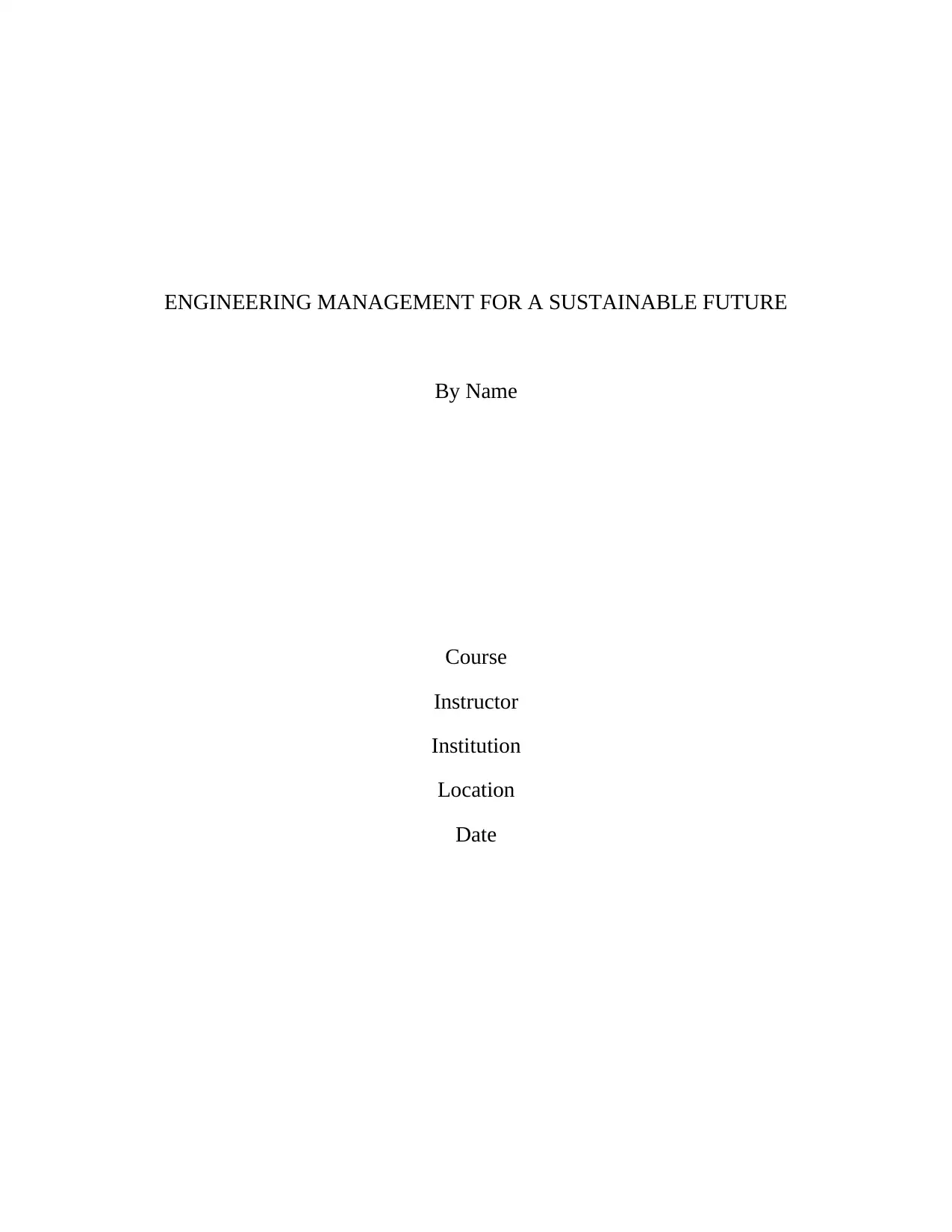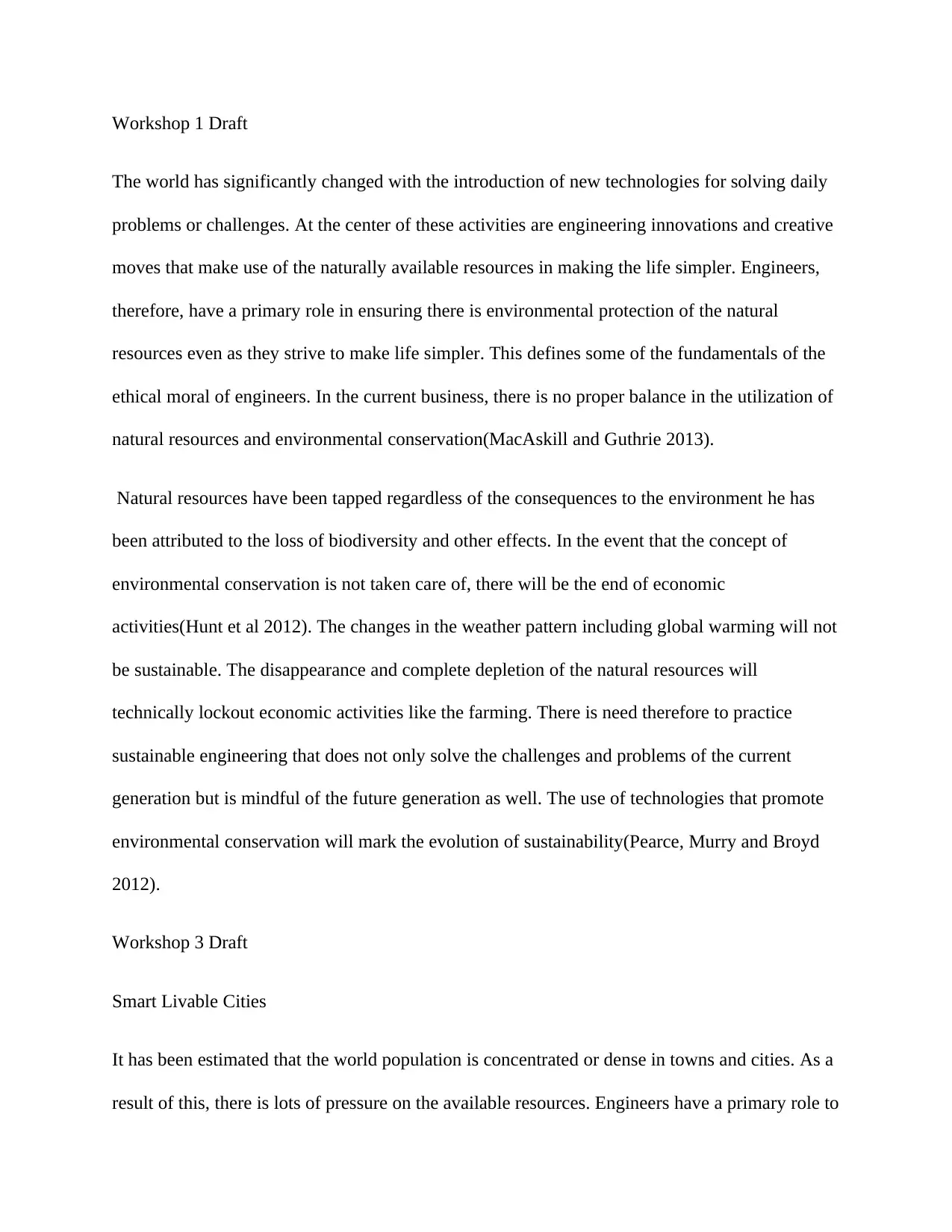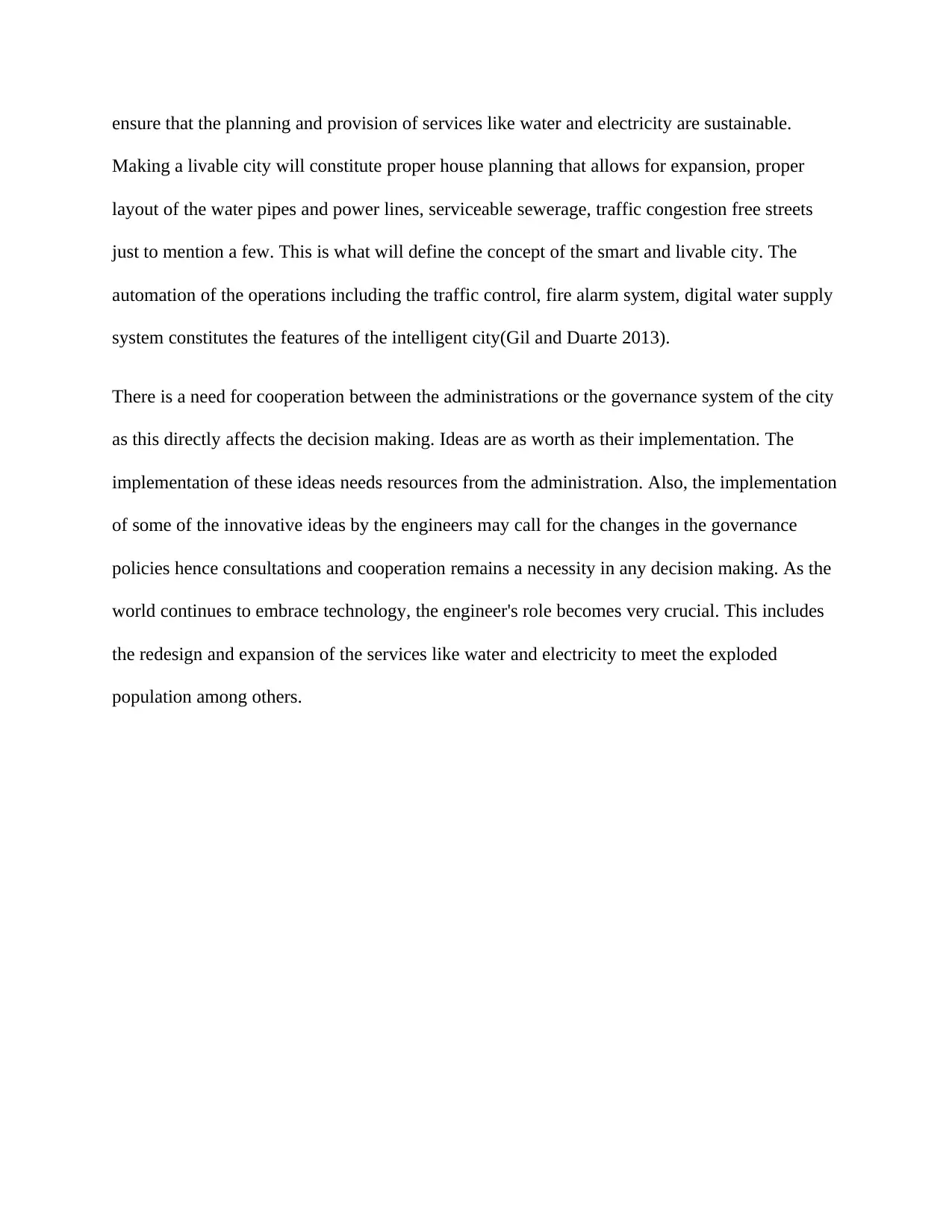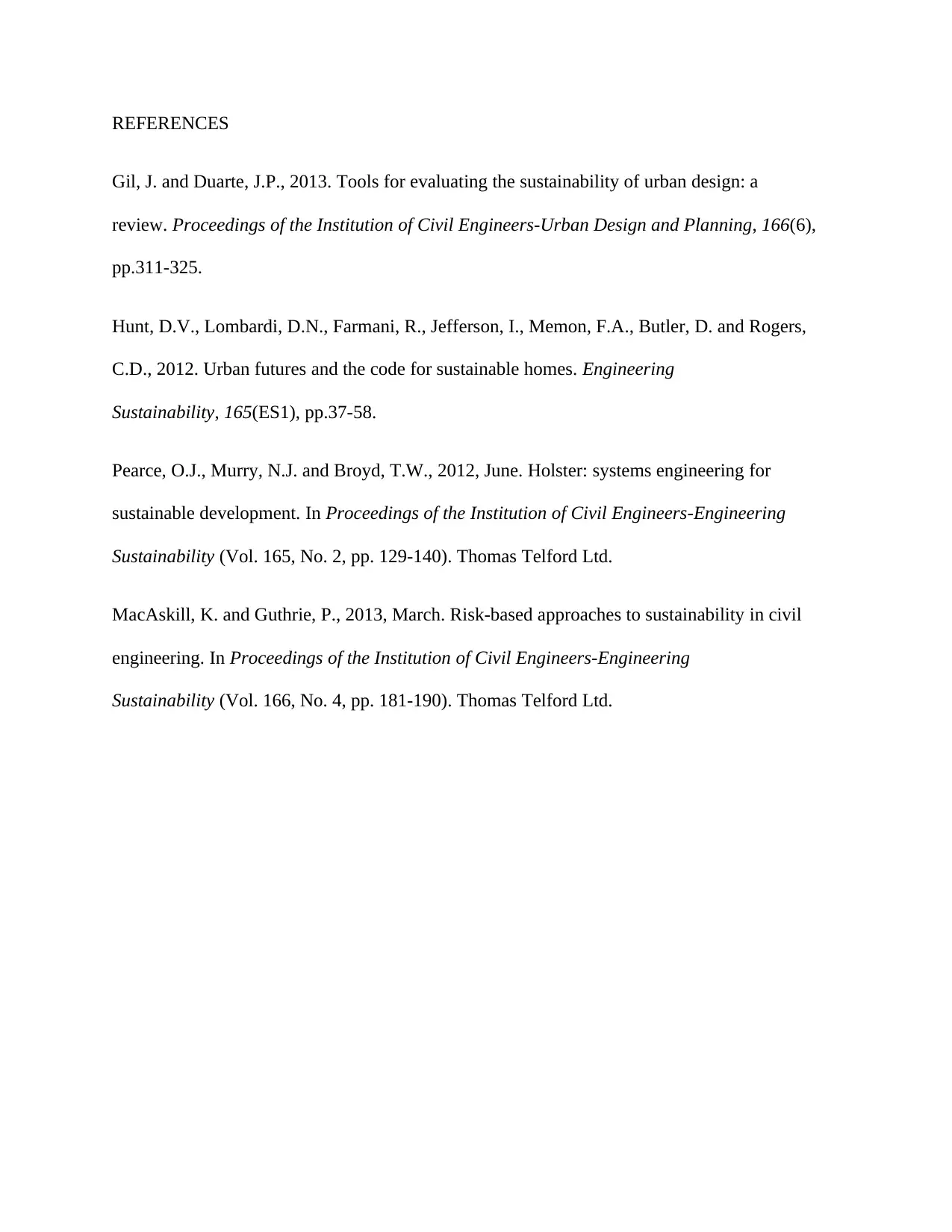MNG 93000 Engineering Management for a Sustainable Future Essay
VerifiedAdded on 2023/05/26
|4
|711
|325
Essay
AI Summary
This essay explores the crucial role of engineering management in achieving a sustainable future. It highlights the ethical responsibility of engineers to balance technological advancements with environmental conservation, addressing the current imbalance in natural resource utilization and its consequences. The essay emphasizes the need for sustainable engineering practices that consider the needs of future generations, advocating for technologies that promote environmental protection. Furthermore, it discusses the concept of smart, livable cities, focusing on sustainable urban planning, resource management, and the integration of technology to improve the quality of life in densely populated areas. The importance of cooperation between engineers and city administrations in implementing innovative solutions and adapting governance policies is also underscored.
1 out of 4






![[object Object]](/_next/static/media/star-bottom.7253800d.svg)